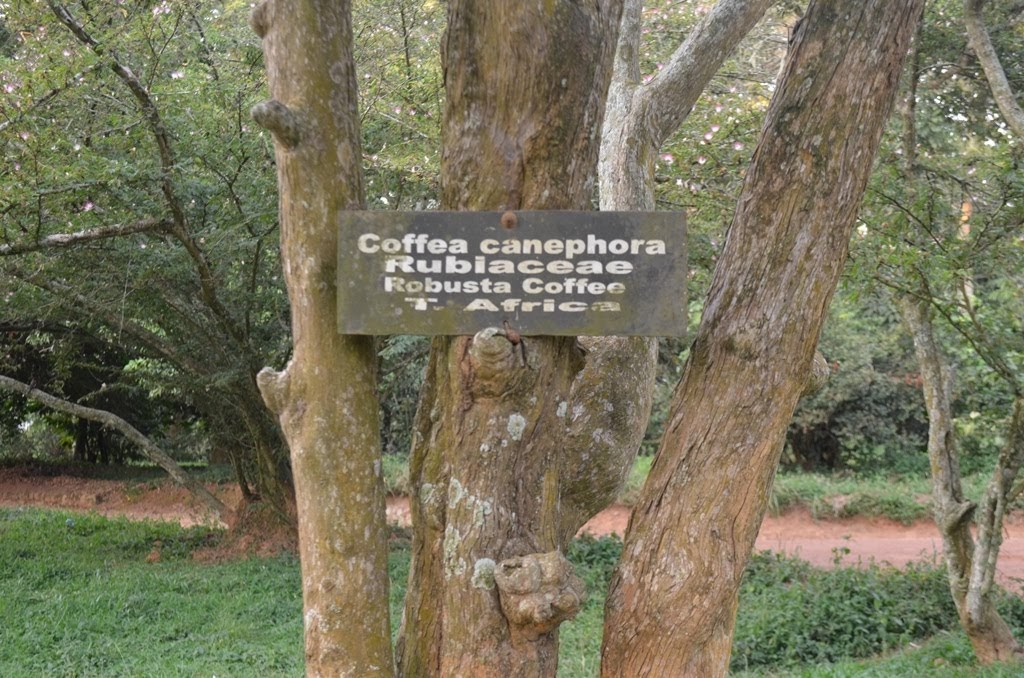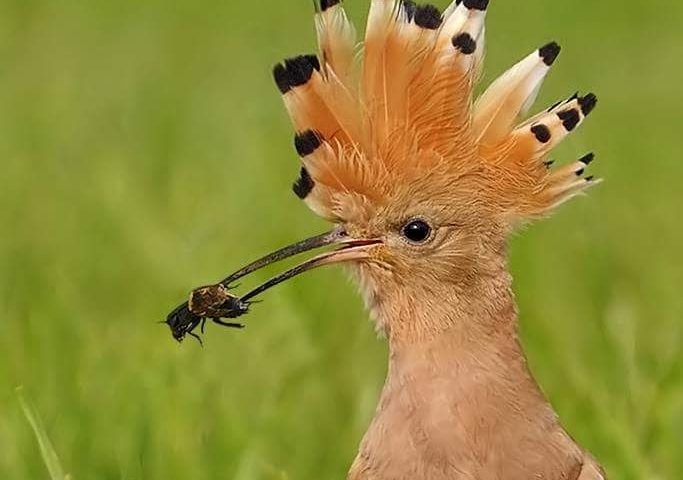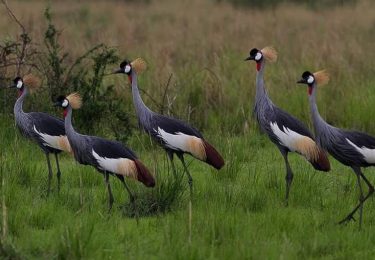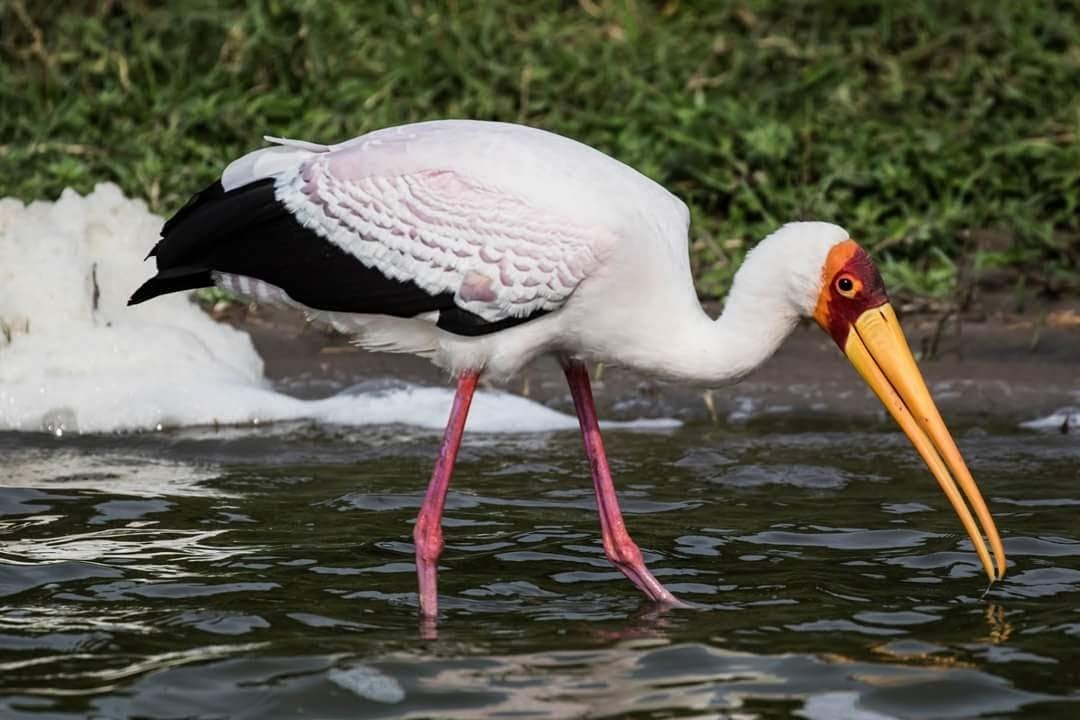- Home
- About Us
- Uganda safaris
- Long Safaris
- Short Safaris
- Day Short Safaris
- 1 Day Entebbe Botanical gardens weekend birding excursion
- I Day Entebbe City Tour
- 1 Day Jinja, Mabira, Ssezibwa Tour
- 1 Day Jinja Source of the Nile tour
- Lake Victoria Sunset Cruises
- 1 Day Kampala City Tour
- 1 Day Mabamba Shoebill Stork And Birding Tour
- 1 Day Makanaga Shoebill And Birding Trip
- 1 Day Ngamba Island Boat And Chimpanzee Excursion
- Other Tours
- Gorilla Safaris
- Uganda Gorilla safaris
- 4 Days Mgahinga Bwindi gorilla and golden monkey trekking safari
- 3 Days Mgahinga Gorilla trekking safari
- 5 Days Mgahinga Gorillas, Golden Monkey And Lake Bunyonyi Tour
- 5 Days Gorillas And Wildlife, L.Mburo, Bwindi and L. Bunyonyi
- 8 Days Wildlife, Gorillas, Golden Monkeys Trip
- 8 Days Gorillas Chimpanzee and wildlife Trekking Tour
- 9 Days Kidepo Valley National park and Bwindi Gorilla Safari. Wildlife and gorillas
- 11 Days Gorilla And Chimpanzee Tracking and wildlife Safari
- Rwanda Gorilla Safaris
- Uganda Gorilla safaris
- National Parks
- Kidepo Safaris
- Queen Elizabath Safaris
- Lake Mburo Safaris
- Mgahinga
- Mgahinga Gorilla National Park
- 3 Days Mgahinga Gorilla trekking safari
- 4 Days Mgahinga Bwindi gorilla and golden monkey trekking safari
- 5 Days Rwand-Uganda Gorilla, Golden Monkey trekking trip
- 5 Days Mgahinga Gorillas, Golden Monkey And Lake Bunyonyi Tour
- 8 Days Wildlife, Gorillas, Golden Monkeys Trip
- Our Blog
- Other Safaris
- Home
- About Us
- Uganda safaris
- Long Safaris
- Short Safaris
- Day Short Safaris
- 1 Day Entebbe Botanical gardens weekend birding excursion
- I Day Entebbe City Tour
- 1 Day Jinja, Mabira, Ssezibwa Tour
- 1 Day Jinja Source of the Nile tour
- Lake Victoria Sunset Cruises
- 1 Day Kampala City Tour
- 1 Day Mabamba Shoebill Stork And Birding Tour
- 1 Day Makanaga Shoebill And Birding Trip
- 1 Day Ngamba Island Boat And Chimpanzee Excursion
- Other Tours
- Gorilla Safaris
- Uganda Gorilla safaris
- 4 Days Mgahinga Bwindi gorilla and golden monkey trekking safari
- 3 Days Mgahinga Gorilla trekking safari
- 5 Days Mgahinga Gorillas, Golden Monkey And Lake Bunyonyi Tour
- 5 Days Gorillas And Wildlife, L.Mburo, Bwindi and L. Bunyonyi
- 8 Days Wildlife, Gorillas, Golden Monkeys Trip
- 8 Days Gorillas Chimpanzee and wildlife Trekking Tour
- 9 Days Kidepo Valley National park and Bwindi Gorilla Safari. Wildlife and gorillas
- 11 Days Gorilla And Chimpanzee Tracking and wildlife Safari
- Rwanda Gorilla Safaris
- Uganda Gorilla safaris
- National Parks
- Kidepo Safaris
- Queen Elizabath Safaris
- Lake Mburo Safaris
- Mgahinga
- Mgahinga Gorilla National Park
- 3 Days Mgahinga Gorilla trekking safari
- 4 Days Mgahinga Bwindi gorilla and golden monkey trekking safari
- 5 Days Rwand-Uganda Gorilla, Golden Monkey trekking trip
- 5 Days Mgahinga Gorillas, Golden Monkey And Lake Bunyonyi Tour
- 8 Days Wildlife, Gorillas, Golden Monkeys Trip
- Our Blog
- Other Safaris
17 Days Uganda birding safari

1 Day Entebbe Botanical gardens weekend birding excursion
October 18, 2017
14 Days Albertine rift endemic birding safari
October 18, 2017From the source of the White Nile on the northern showers of Lake Victoria to the snow-capped Ruwenzori Range, the montane forests that extend from the Virunga volcanoes, harbouring some of the last remaining Mountain Gorillas, to the extensive savannas around the awe-inspiring Murchison Falls and the Kidepo Valley National Parks, Uganda is an equatorial country of astonishing contrasts. No other area in Africa can match its amazing diversity of habitats, and this richness is reflected in its incredible bird list of over 1057 species making it the Eden of Birding in Africa!
Amongst these are many highly sought-after birds, such as the unique Shoebill which is a globally threatened species and the numerous spectacular endemics of the Albertine Rift Valley, currently impossible to find anywhere else on the African continent. The huge bird list is all the more remarkable given the small size of the country (approximately equal to Great Britain measuring 90,041 sq miles), making it the richest African birding destination in species diversity per sq kilometer
Day 1: Arrival at Entebbe – Uganda for our African birding Safari.
Arrive for our exclusive African birding safari at Entebbe international Airport – Uganda and be met by our expert birding African Safari Guide who will transfer you to the hotel, however, depending on time available we may exclusively begin our African birding safari at chosen sites before transferring to our hotel. Birding the Entebbe Botanical Gardens with its different ecosystems this day or the other before departure may be a good welcome and eye opener of what we expect on the African birding safari. We will look out for African Open-billed Stork, Giant, African pygmy, Woodland Malachite and striped Kingfishers, Great Blue & Ross’s Turacos, White-headed & Double-toothed Barbets, Red-headed Lovebird, Broad-billed Roller, African pied & Black-and-white Casqued Hornbills, African Palm Swift, Angola Swallow, Splendid Glossy Starling, Black-headed Gonolek, Red-chested, green throated, superb, olive, olive bellied and collard Sunbirds, Grey-capped and African Reed Warbler, Brown-throated Wattle-eye, Brown Twinspot, Black-headed Bush-shrike and, Slender-billed, Brown-throated¸ Golden-backed, Orange, black necked & Yellow-backed Weavers.
Day 2 – Transfer to Murchison Falls National Park.
Today we shall travel north to Murchison Falls. Along the way, we will no doubt find plenty of good African birds as wed drive through a variety of ecosystems including grasslands and swamps where species such as Banded Snake-Eagle, Blue-cheeked Bee-eater, Green-backed Eremomela, Black Bishop, and Yellow-shouldered and Marsh widowbirds occur. Dry woodlands further north will provide our best chance of finding the unusual Yellow-billed Shrike and Yellow-bellied Hyliota African moustached wabler . further we may stop to search for African and the less common Bruce’s green-pigeons; White-headed Barbet; Yellow-fronted Tinkerbird; flocks of Lesser Blue-eared and Violet-backed starlings. Murchison Falls National Park is Uganda’s largest and famous safari park for big game, spectacular scenery and the falls for which the park was named. Abundant Hippos, Crocs, African Elephant, Buffalo, Uganda Kob and Waterbuck can be seen along with occasional Lions and Patas Monkeys.
There are chance of finding Shoebill amongst a huge variety of widespread African bird species in the wetlands. Other water birds flourish and we hope to see the African Darter; Intermediate Egret; Goliath and Purple herons; African Finfoot; Saddle-billed and Yellow-billed storks; Hamerkop; Egyptian and Spur-winged geese; Osprey; African Fish-Eagle; Black Crake; Purple Swamphen; African Jacana; flocks of African Skimmers resting on the sandbanks; Malachite and Giant kingfishers and dashing Wire-tailed Swallows. Burrows in the riverbanks represent colonies of either colourful Red-throated Bee-eaters or snappish Pied Kingfishers.
The elusive Pel’s Fishing-Owl is even a possibility here and elegant Red-necked Falcons frequent palm trees, which line the banks. In addition to the birds, large numbers of huge Nile Crocodiles; Hippos; African Buffalo; Vervet Monkey and Olive Baboon are often seen at very close range, and herds of African Elephants. The landscape point at the top of the Murchison Falls offers incredible views of the Victoria Nile boiling down the narrow gorge. Bare, rocky islets are favoured perches and breeding sites of Rock Pratincole. We should see large numbers of these attractive waders wheeling in the spray of the falls.
Thick riverine forest in this vicinity is home to the magnificent White-crested Turaco, often considered the most beautiful member of its striking family; Yellow-throated Greenbul; Spotted Morning-Thrush; Red-capped Robin-Chat; Brown-throated Wattle-eye; the localized Red-winged Grey Warbler and Purple-banded Sunbird. This evening we shall embark on a night drive in search of one of Africa’s most spectacular birds: the Standard-winged Nightjar. Witnessing a male Standard-winged Nightjar fluttering up from the track, his bizarre standards trailing behind him, is likely to be a highlight of the trip. Other possibilities include Spotted Thick-knee; Grayish Eagle-Owl; Northern White-faced Owl and Slender-tailed, Long-tailed, Plain and Swamp nightjars.
Nocturnal mammals that we may encounter include Serval; White-tailed Mongoose; African Civet; Crested Porcupine; Blotched and Common genets and Uganda Grass-Hare. Our lovely lodge is perched on a ridge overlooking the mighty Victoria Nile – Paraa Safari Lodge
Day 3: Murchison Falls National Park.
We will have a full day to explore the National Park with some very productive and varied dry thorn savanna and open woodland habitats close to the lodge. Here we look out for Abdim’s Stork; Stanley’s Bustard, Secretary bird; Black-breasted Snake-Eagle; Tawny and Martial eagles; Shikra; Dark Chanting-Goshawk; Little Sparrowhawk, the irruptive Grasshopper Buzzard; Pallid and Montagu’s harriers; Harlequin Quail; Heuglin’s Francolin; Black-headed Lapwing; Vinaceous; Blue-spotted and Black-billed Wood Doves, Senegal Coucal; Abyssinian Ground Hornbill, Black Scimitar-bill; Blue-breasted, Madagascar, Northern Carmine and Swallow-tailed bee-eaters, Broad-billed & Abyssinian Rollers, Black-billed & Double-toothed Barbets, African Moustached Warbler, Marsh Tchagra, Yellow-mantled Widowbird, Black & Black-winged Red Bishops, Yellow-throated Leaflove, Black-necked, Foxy, Whistling, Siffling & Singing Cisticolas, Broad-tailed, Red-winged & Red-winged Grey Warblers, Black-headed Gonolek, White-fronted Black-Chat, Sooty Chat, Snowy-crowned Robin-Chat; Western Violet-backed, Beautiful, Pygmy, Copper & Olive-bellied sunbirds; Silverbird; Sulphur-breasted and Gray-headed bushshrikes; White Helmetshrike; migrant Isabelline and Northern wheatears and Woodchat and Rufous-tailed shrikes; Black-headed Batis, Slender-billed & Compact Weavers, Black-bellied and Bar-breasted Firefinches and African Quailfinch, White-rumped Seedeater, Speckle-fronted Weaver; Rufous Sparrow; Fawn-breasted and Black-rumped waxbills.
The moist, grassy woodland to the south of the Nile is very different from that of the North bank and supports a host of localised birds including Brown-backed Woodpecker; Brown Babbler; the unusually proportioned Purple Glossy-Starling; Chestnut-crowned Sparrow-Weaver; Black-bellied Firefinch; Cabanis’ and Brown-rumped buntings; and if we are fortunate, Bat Hawk; African Cuckoo-Hawk; African Marsh Harrier; Ovampo Sparrowhawk; African Harrier Hawk; White-breasted Cuckoo-shrike and Red-winged Pytilia. Other species which we will search for here are African Cuckoo; Eurasian Hoopoe; African Gray Hornbill; Gray Woodpecker; Northern and Red-faced crombecs; African Paradise-Flycatcher (often of the spectacular white morph); Northern Puffback; Black-crowned and Brown-crowned tchagras; Tropical Boubou and Red-cheeked Cordonbleu.
Day 4 – Birding In Budongo Forest
Early this morning we will turn back south the short distance to the famous Budongo Forest. This will be our first introduction to central African forest birding, and we will spend much of the day in the vast Budongo Forest Reserve, the largest natural forest area in East Africa. This is the only known site in East Africa for Puvel’s Illadopsis.
We can expect to find this bird as well as a wide range of other forest species. We will have much of the day to try and find a good mix of widespread species and more local specialities such as Crested Guineafowl sporting, White-crested Turaco, Chestnut-crowned Eremomela, Yellow & Grey Longbills, Olive-bellied Crombec, Yellow-browed Camaroptera, Little Green Sunbird, Crested Malimbe and Red-headed Bluebill among others.
Here there are many West African rarities: White-thighed Hornbill, Green-breasted Pitta, Rufous-sided Broadbill, Blue-breasted, Dwarf & Chocolate-backed Kingfishers, Yellow-crested & Brown-eared Woodpeckers, Yellowbill, Western Black-headed Oriole, Yellow-spotted, Hairy-breasted & Yellow-billed Barbets, Green Hylia, Buff-throated, Black-throated & Black-capped Apalises, Black-eared Ground-Thrush, Rufous-crowned Eremomela, the elusive Lemon-bellied Crombec, Crested & Red-headed Malimbes various forest starlings among others. We will also be in prime area for a wide range of primates such as Blue & Red-tailed Monkeys and Black and white Colobus – and if lucky Chimpanzees (this area is home to Uganda’s largest population of Chimpanzees) over night at Masindi Hotel
Day 5: Birding In The Royal Mile.
Today our birding safari will be centered on “The Royal Mile,” a wide forestry track considered to be the country’s premier forest birding locality. Among the numerous specials we hope to find include Buff-spotted Flufftail; the kingfishers; African pygmy, Chocolate-backed, Blue-breasted and African Dwarf; the huge White-thighed Hornbill; Yellow-spotted, Hairy-breasted and Yellow-billed barbets, the tinkerbirds (Speckled, Yellow-throated and Yellow-rumped all being likely); Western Black-headed Oriole; Green Hylia; Gray and Yellow longbills; the rarely encountered Uganda Wood-Warbler; Gray, Buff-throated, Black-throated, and the stunning Black-capped apalises; Rufous-crowned Eremomela; Green and elusive Lemon-bellied crombecs; African Forest-Flycatcher; Chestnut-capped Flycatcher; Purple-headed Glossy-Starling; Little Green, Green, Collared, Olive-bellied and the aberrant Gray-headed sunbirds and White-breasted Negrofinch.
There are many confusing forest greenbuls to test us and we shall work slowly through any flock that we encounter, looking for Plain, Gray, Yellow-whiskered, Slender-billed, Honeyguide, White-throated, Xavier’s, Red-tailed, and the striking Spotted greenbuls.
This is the best place in Uganda to find the beautiful Nahan’s Francolin. It is fairly commonly heard, but we will require luck and patience to see this secretive and near-endemic species. We will search the undergrowth alongside the track for the numerous understorey skulkers, which may include Scaly-breasted, Brown and Pale-breasted illadopses; Blue-shouldered Robin-Chat, Fire-crested Alethe; Rufous Flycatcher-Thrush; Red-tailed Ant-Thrush; Yellow-browed and Olive-green camaropteras and Grey-throated Tit-Flycatcher. We will keep an eye on any openings in the forest canopy, as Cassin’s and Crowned hawk-eagles; White-throated Bee-eater and Cassin’s, Mottled and Sabine’s spinetails are all possible.
The spinetails occasionally drink from a nearby forest pond, and here we also hope to find a pair of brilliant Shining-blue Kingfishers. Canopy flocks support Yellow-mantled Weaver, Crested and Red-headed malimbes, Rufous Thrush and Uganda Woodland-Warbler. We will keep an eye on any openings in the forest canopy as Cassin’s and Crowned Hawk-eagles are possible. The area around the Park Headquarters is the only site in East Africa for the elusive canopy-dwelling Ituri Batis.
Day 6: Transfer to Kibale National Park.
Today we will take the longest drive of our African birding safari south from Masindi to Kibale.If time allows we may have time for birding along the journey at the Rift Valley escarpment looking out for Vinaceous Dove, Black-billed Barbet, Cliff-chat, Foxy Cisticola, Red-winged Pytilia and Chestnut-crowned Sparrow-Weaver. Birding here and en-route should continue to produce species not found elsewhere in East Africa and more akin to West African rainforest: Western Banded Snake-Eagle, Red-Chested Swallow, Joyful Greenbul, Masked Apalis and Green-headed Sunbird. Kibale offers excellent African birding.
It harbours the greatest variety and concentration of primates found no where on the African continent and is famous for its Chimps. Superb birds and primates combined with easy access, a good infrastructure and a variety of interesting activities make this forest a “must-visit”. African Birding site – Kibale is magnificent and fruitful with over 335 species recorded: African Crowned-Eagle, Afep Pigeon, Red-winged Francolin, Black-billed Turaco, Narina Trogon, Black Bee-eater, White-headed Wood Hoopoe, Yellow-rumped Tinkerbird, African Pitta, Grey-winged and Red capped Robin-chat, African Broadbill, Willcock’s, Thick-billed & Cassin’s Honeybirds, Mountain Wagtail, Velvet-mantled Drongo, Petit’s Cuckoo-Shrike, Joyful & Honeyguide Greenbuls, Banded Prinia, Masked Apalis, Black-and-white Flycatcher, Pink-footed Puffback, Chestnut-winged Starling, Superb, Green-headed & Green-throated Sunbirds, Dark-backed Weaver are all possible specials of the area. Overnight at Ndali Lodge
Day 7: Kibale National Park.
After an early breakfast we’ll head off to Kibale with its towering forest has a well-established Chimpanzee-tracking program with a high success rate. Kibale Forest has the highest primate concentration and species diversity of any reserve in East Africa. Species that may be found include Red & Guereza Colobus, Olive Baboon, Grey-cheeked Mangabey, L’Hoest’s, Blue, Vervet and Red-tailed Monkey. Bush Pig and African Buffalo, Bushbuck, Blue, Harvey’s and Peter’s Duikers are other shy inhabitants of the forest interior. A morning walk through the forest combines chimp trekking with a selection of forest birds. In this excellent medium-altitude forest we’ll search for the many dazzling sunbirds this area supports.
Bird parties hold the magical Black-throated Apalis, Forest Robin, Dusky-blue Flycatcher and African Shrike-flycatcher amongst illadopses and alethes, Black-bellied Seedcracker inhabits the forest edge, while the canopy holds malimbes. Gray-throated, Yellow-spotted & Yellow-billed Barbets, globally-threatened White-naped & Afep Pigeons, Red-chested Owlet. After lunch we’ll probably bird the near-vicinity of the lodge and the main road, looking out for species like Crested Guinea Fowl, Narina & Bar-tailed Trogons, African Emerald Cuckoo, Grey Parrot, Sabine’s Spinetail, Chestnut Wattle-eye, Red-tailed Ant-Thrush, Blue-shouldered Robin-chat and more. Overnight stay at Chimpanzee Guest House
Day 8: Transfer To Semliki National Park.
We start early after breakfast and drive to a remote southwest corner of Uganda – the Semliki Forest. This is where the West African jungles meet with the East African savannahs in Uganda. A large number of Guinea-Congo biome species reach their eastern limits here, which is one of the richest for forest birds in the country.
Semliki Forest also marks the Eastern extension of the great Ituri Forest. This therefore makes it the hot spot in Uganda to encounter some of the West African species virtually impossible, or difficult to find elsewhere. We will have much of the day in the forest including visiting the male and the female hot springs. Specialties include Congo Serpent Eagle, Black-throated Coucal, Grey-throated & Nkulengu Rail, Long-tailed Hawk, Spot-breasted Ibis, Capuchin Babbler, Yellow-throated Nicator, Northern Bearded Scrub Robin, Red-chested Owlet, Western Bronze-napped Pigeon, Black-collared Lovebird, White-bellied Kingfisher, Red-rumped Tinkerbird, Lyre-tailed & Zenker’s Honeyguide, White-throated Blue Swallow, Bate’s Nightjar, Yellow- throated Cuckoo, Orange-tufted Sunbird, Black-winged Oriole, Red-billed Helmet Shrike, Lemon-bellied Crombec, Rufous-sided Broadbill, Icterine Greenbul, Swamp Palm Bulbul, Crested and Blue-billed Malimbe, Fiery-breasted Bush-shrike, Pale-fronted Negrofinch and Piping, Red-billed Dwarf, Black Dwarf, White crested, Black-casqued Wattled and White-thighed Hornbills. In the evening we drive back to Semliki Lodge.
Day 9: Birding Semliki Valley.
We return to Semliki National Park at dawn for early birding along the Kirumia trail. This will give us the best part of another full day to seek out all the very special birds and really do this area justice. Trails wind through various forest types, oxbow lakes, and some more open habitats to ensure a wide cross-section of all the great wildlife this seldom-visited area has to offer. By early evening we will be back to the central town of Fort Portal. And spend the night at Mountains of The Moon Hotel – Uganda
Day 10: Queen Elizabeth National Park.
After an early breakfast, we travel to Queen Elizabeth National Park. ( Kasenyi area ) We will spend time birding in the spectacular Crater area in the foothills of the Ruwenzori Mountains and the main game-viewing area along the Kasenyi track. Species that will be the focus of our search include Rueppell’s Griffon; Bateleur (one of Africa’s most spectacular raptors); Brown Snake-Eagle; Peregrine Falcon; Gray Kestrel; Red-necked Francolin; Harlequin Quail; Small and the rarely encountered Hottentot buttonquails; African Crake; Pied Avocet; Temminck’s Courser; Senegal and Crowned lapwings; the marsh dwelling Black Coucal; Blue-breasted Bee-eater; Greater Honeyguide; Flappet, Rufous-naped, Red-capped and the scarce White-tailed larks; Plain-backed Pipit; Fan-tailed Grassbird; Croaking, Red-faced, and Stout cisticolas; Whinchat; Marsh Tchagra; Black-lored Babbler; Red Bishop; flocks of Red-billed Quelea; Red-billed Firefinch and Black-chinned Quailfinch.
The journey takes us along the foothills of the mountains of the Moon (Rwenzori Mountains) by Kasese, and crossing the Equator as you get close to Lake Kikorongo. This Park is another with some of the highest biodiversity ratings of any game reserve on the African continent or the world. Its varied habitat of open savannah, dense papyrus swamps and lakes, makes it one of the richest African safari parks.
Game in the park includes African Elephant, a glut of Hippos, the elusive Giant Forest Hog and handsome Uganda Kob, with occasional Lion and Leopard. Much of the journey will be a game-drive and provide good birding in an open East African Savanna setting. Look out for raptors, Barbets, Tinkerbirds, Kingfishers, Bee-eaters, Red-chested Cuckoo, Lesser Striped Swallow, Black-lored Babbler, Grey-backed Fiscal-Shrike, Common Fiscal, Sunbirds and more.
There are many other key African bird species in the area: White-faced Whistling & Knob-billed Ducks, African Spoonbill, African Open-billed & Saddle-billed Storks, Collared Pratincole, Water Thick-knee, Spur-winged & African Wattled Plovers, African Skimmer, Martial Eagle, Gabon & Slender-tailed Nightjars, Black-rumped Buttonquail, Common Quail, Malachite Kingfisher, Verreaux’s Eagle-Owl, Birding around the lodge itself is rewarding, with resident spectacular species including Gray-headed Kingfisher; White-browed Robin-chat; Gray-capped Warbler; Black-headed Gonolek, Scarlet & Red-chested Sunbirds. A highlight of the tour is the launch trip on the Kazinga Channel, which allows a close approach to African Buffalo and Hippopotamus, as well as numerous African waterbirds. Amongst many others, we hope to find Great Cormorant; two species of pelicans; African Open-billed & Saddle-billed Stork; Glossy Ibis; Western Marsh-Harrier; Wattled Lapwing; Water Thick-knee; several species of gulls and terns including the recently split Heuglin’s Gull; large numbers of migratory Yellow Wagtails, Swamp Flycatcher and Winding Cisticola. In the evening before dinner we may have a night drive with in the peninsular searching for Gabon and Slender-tailed Nightjars, and owls Over night at Mweya Lodge
Day 11: Transfer To Bwindi via Ishasha.
With a packed lunch we shall start with a morning game drive as we check out birding the grassland area may produce the Black coucal, African Crake, Holub’s golden weaver, African moustached and broad tailed wabler, spot flanked barbet and much more we shall continue with the drive through the extensive southern Ishasha section of Queen Elizabeth National Park. Savanna bird and mammal species are likely to be seen, and we may be fortunate in sighting the famous tree-climbing Lions of this area. The elusive Scaly Francolin is another species that we hope to find on this route. Finally, we will reach the headquarters of Bwindi Impenetrable National Park at Buhoma, where we will be based for three nights.
This park offers the most productive montane forest birding in Africa and supports 23 of Uganda’s 24 Albertine Rift endemic bird species – a true birding paradise. Our first African birding experience here may produce such exciting species as Montane and African Golden Orioles, Dusky and Shelley’s Crimsonwings, Yellow-bellied Waxbill, Magpie Mannikin, Yellow-crowned Canary, Thick- billed & Streaky Seedeater, African Green Broadbill, Oriole Finch, Mountain Buzzard, Ayre’s Hawk-eagle, Handsome Francolin, Black-billed Turaco, Bar-tailed Trogon, Cinnamon-chested Bee-eater, (Western) Bronze-naped Pigeon, Red-chested Owlet, Western Green Tinkerbird, African Green Pigeon, Lagdens, Many coloured, & Ludher’s Bush Shrike, Petit’s and Grey Cuckoo-shrikes, Archer’s Ground Robin, Equatorial Akalat, White-bellied Robin-chat, Olive Thrush, White-tailed Ant-Thrush, Grauer’s Rush-warbler, Short-tailed Warbler, and Red faced Woodland-Warbler. We will stay at a Gorilla Resort or Lake Kitandara for three nights. After dark here we may seek out African Wood-Owl and Rwenzori Nightjar.
Day 12: Buhoma, Bwindi Impenetrable National Park – Uganda.
We will have two full days and various exciting wildlife options. There is excellent forest birding all around us and an abundance of special birds we’ll want to try and find.
This is also the center from which we can hike into the adjacent forest to see some of the few remaining Mountain Gorillas. We can make a trek to visit one of the two habituated family groups and spending an hour with these gentle giants without a doubt, one of the greatest African wildlife experiences on Earth.
The trek time and length to reach these amazing creatures is unpredictable as these are wild animals free to roam wherever they choose. But with two days here, it is possible if you are keen to split the days equally between these two rich experiences of forest birding and gorilla-watching.
We will spend plenty of good time birding the trails leading out from the camp. Species we will search for include Barred and Olive Long-tailed Cuckoos; Bar-tailed Trogon; Dusky Tit; Kivu Ground-Thrush; White-bellied Robin-Chat; Equatorial Akalat; White-tailed Ant-Thrush; Red-throated Alethe; White-bellied Crested-Flycatcher; White-eyed Slaty-Flycatcher; African green pigeon, Gray-green Bushshrike; Northern Double-collared Sunbird; Black-billed Weaver.
High exposed perches in the open forest are favored by African Goshawk; the dazzling Black Bee-eater; Blue-throated Roller; Sooty Flycatcher and forest starlings among others; Waller’s, Stuhlmann’s and Narrow-tailed. One of Bwindi’s star avian attractions is the diminutive, pitta-like Neumann’s Warbler, a vocal yet very secretive bird! Other under-storey birds we hope to see include displaying African Broadbill; Pale-breasted and Mountain Illadopsis, African Hill-Babbler, Red-throated Alethe, Black-faced, Black-throated and Mountain Masked Apalises, Banded Prinia and the handsome Black-faced Rufous-Warbler.
The mid-storey and canopy supports Elliot’s and Tullberg’s woodpeckers; Cabanis’, Toro Olive, Shelley’s and Ansorge’s greenbuls; the strange Grauer’s Warbler and White-browed Crombec, Yellow-eyed Black, Ashy, Dusky-blue, Chapin’s and Cassin’s Grey Flycatchers, Chin-spot and Rwenzori Batis, Black-and-white Shrike-flycatcher, White-bellied Crested-flycatcher, Dusky Tit, Blue-throated Brown, Blue-headed, Grey-headed Sunbird, Mackinnon’s Fiscal, Sooty Boubou, Pink-footed Puffback, Doherty’s Bush-shrike.
The rare Jameson’s Antpecker may also be seen probing under moss on dead branches or gleaning warbler-like in the canopy along with Strange, Brown-capped and Black-billed Weavers. Overhead, Scarce Swifts forage over the forest. Birding at Buhoma is a truly magical experience.
Day 14: Buhoma to Ruhija, Bwindi Impenetrable National Park.
Today we will be moving from the lower forest biome to the seldom-visited higher forest in Bwindi Impenetrable National Park. In scrubby areas beyond Buhoma, we will search for Ross’ Turaco; Rufous-necked Wryneck; Brown-backed Scrub-Robin; Bronze, Copper and Variable sunbirds; Baglafecht, Black-necked and Holub’s Golden weavers; Yellow Bishop; Village Indigobird and Black-throated Seed-eater. Further along the road, we will pass through Kitahurira or “The Neck,’ another well-known birding locality.
Here we will search for species such as Black Goshawk; Bronze-naped Pigeon; Cinnamon-chested Bee-eater; Cassin’s Honeyguide; Petit’s Cuckoo-shrike; White-chinned Prinia; the enigmatic Chapin’s Flycatcher; Mountain Wagtail; Pink-footed Puffback; the rare Tiny Sunbird and the attractive Brown-capped Weaver. Even further up the road, cultivated areas provide feeding opportunities for many seedeaters. Our main targets here will be the highly sought-after Dusky Twinspot and Yellow-bellied, Black-headed and Black-crowned waxbills.
African Stonechat; Streaky and Thick-billed seedeaters; African Citril and Cape Canary may also be found here. Noisy Chubb’s Cisticolas will mock us from deep within the bracken, and the beautiful Doherty’s Bushshrike can be lured out from the dense vegetation. Mackinnon’s Shrikes survey the road from high, exposed perches. There are so many special birds at these elevations that we do not want to rush through. Thus we plan to stay at a simple, but well-organised private camp. NIGHT: Asynut Camp
Day 15: African Birding to Ruhija, Bwindi Impenetrable National Park – Uganda.
At the highest elevation bamboo forests, we will keep an eye out for African Black Duck and Mountain Wagtails in the small fast-flowing streams.
Mountain and Augur buzzards; Ayres’s Hawk-Eagle, Rufous-chested Sparrowhawk; Rameron Pigeon; Brown-necked Parrot; Black-billed Turaco; Barred Long-tailed Cuckoo; White-headed Woodhoopoe; Western Tinkerbird; Olive Woodpecker; Thick-billed, Least, and the elusive Dwarf honeyguides; Black Sawwing; Gray Cuckoo-shrike; Eastern Mountain, Honeyguide, Red-tailed, Shelley’s and Yellow-streaked greenbuls; Olive Thrush; White-starred Robin; Stripe-breasted Tit; Mountain and the beautiful Gray-chested illadopses; African Hill Babbler (the local form often treated as a full species, Ruwenzori Hill Babbler); Black-faced, Ruwenzori, and Chestnut-throated apalises; Red-faced Woodland-Warbler; White-tailed Blue-Flycatcher; Yellow-eyed Black-Flycatcher; Ruwenzori Batis; Mountain Sooty Boubou; the rare Lagden’s Bushshrike; Sharpe’s Starling; Black-tailed Oriole; Strange Weaver, and Oriole Finch.
Flowering trees attract the incredible Purple-breasted Sunbird as well as Blue-headed and Regal sunbirds, all three being extremely beautiful Albertine Rift Endemics. Dusky, Red-faced and the elusive Shelley’s crimsonwings, amongst the most beautiful and sought-after of African seedeaters, are possible at Ruhizha. NIGHT: Bakiga Lodge
Day 16: Birding to Lake Mburo National Park – Uganda.
This morning we will continue birding our way eastward. After travelling through mixed broad-leafed and Acacia woodlands and wetlands, we will arrive at Mburo National Park. This is a superb wetland and Acacia savanna sanctuary that hosts some sought-after species. Raptor watching will be a major feature of our time here. Potentials include European Honey-buzzard; African Marsh-Harrier; White-backed, Lappet-faced and White-headed vultures; Short-toed and Brown snake-eagles and African Hawk-Eagle. Lake Mburo’s woodlands are the northern-most example of the southern savanna system and are therefore home to several species at the edge of their range.
Most sought-after of these is the elusive Red-faced Barbet, known only from remote north-eastern Tanzania, Rwanda, and here. We will also search for Crested and Coqui francolins; Emerald-spotted Wood-Dove; Red-chested, Levaillant’s, Klaas’ and Dideric cuckoos; Blue-naped and Speckled mousebirds; Lilac-breasted Roller; Striped Kingfisher; Green Woodhoopoe; Common Scimitar-bill; Spot-flanked Barbet; Nubian and Bearded woodpeckers; several swallows including Barn, Lesser Striped, Rufous-chested, Mosque, Red-rumped and White-headed Saw-wing; Black Cuckoo-shrike; Red-backed Scrub-Robin; Rattling and Trilling cisticolas; the meadowlark-like Yellow-throated Longclaw; Chinspot Batis; Yellow-billed Oxpecker; African Penduline-Tit; Arrow-marked Babbler; Brubru; Wattled Starling; Greater Blue-eared Glossy-Starling; Mariqua Sunbird and Red-headed Weaver. Rarities we will watch for include African Finfoot; Tabora Cisticola and Papyrus Yellow Warbler.
Mammals we may find include foraging groups of Banded Mongoose and Dwarf Mongoose surveying the world from atop their adopted termite mounds; Common Zebra; Hippopotamus; Common Warthog; Eland (the world’s largest antelope); Defassa Waterbuck; Bohor Reedbuck; Impala; Oribi; and Topi. Just outside the park, we will come across some of the world-famous long-horned Ankole cattle. After two nights of simple camp life we will enjoy a stay at the comfortable Mantana tented camp situated within the park where African Scops-Owl is a resident. Overnight at Rwakobo rock lodge.
Day 17: Lake Mburo National Park to Mabamba Bay then to Entebbe.
As we conclude our exclusive African birding safari in Uganda , we can spend time at Lake Mburo this morning before heading back to Entebbe in time to connect with onward flights towards home. En route we cross the Equator where there is a good local craft market. Depending on the time of your flight, we proceed to Mabamba Swamp on the shores of Lake Victoria.
This is one of the few remaining swamps in the country protected by the local communities – an extensive papyrus swamp with its labyrinth of channels and lagoons, classified as an IBA (Important Bird Area) and a RAMSAR site and home to several pairs of Shoebills, Uganda’s most famous avian resident, the only representative in its family, is certainly amongst the most sought-after birds in Africa as well as being endemic to the African continent and we’ll make special efforts today to find it by paddling through the channels by boat.
The huge Shoebill usually stands motionless on the edge of channels waiting for a hapless catfish and sometimes allows close approach. There will of course be a good selection of African waterbirds: Pink-backed Pelican, Long-tailed Cormorant, Goliath and Purple Heron, African Fish-Eagle, African Marsh-Harrier, Yellow-billed Duck, African Water Rail, Allen’s Gallinule, Malachite Kingfisher along with slightly more local species such as Long-toed Plover, Blue-breasted Bee-eater, Blue-headed Coucal, Papyrus Gonolek, Swamp Flycatcher, White-winged wabler . Other areas in and around Entebbe/Kampala may produce African Open-billed Stork, Grey Kestrel, Eastern Grey Plantain-Eater, African Green Pigeon, Black-and-white Shrike-flycatcher – maybe the rare Weyn’s Weaver the African pied wagtail is very common on the road as we drive. NIGHT: In flight. End of our exclusive African Birding Safari.




